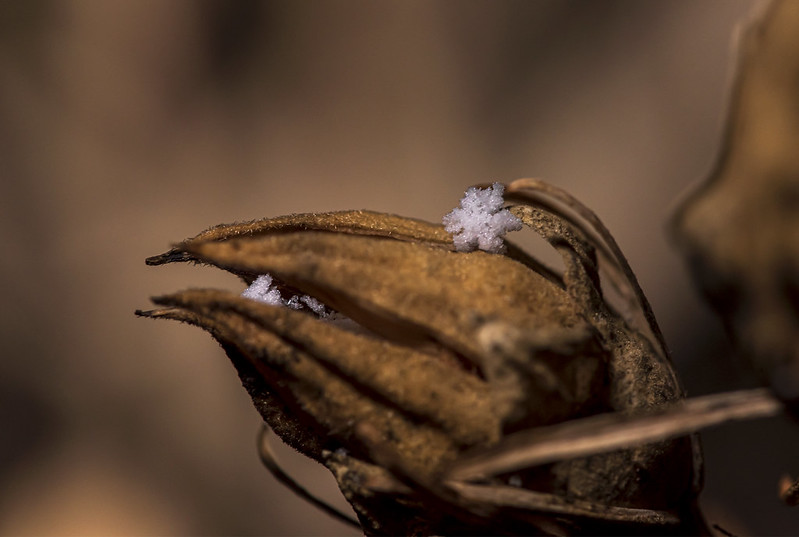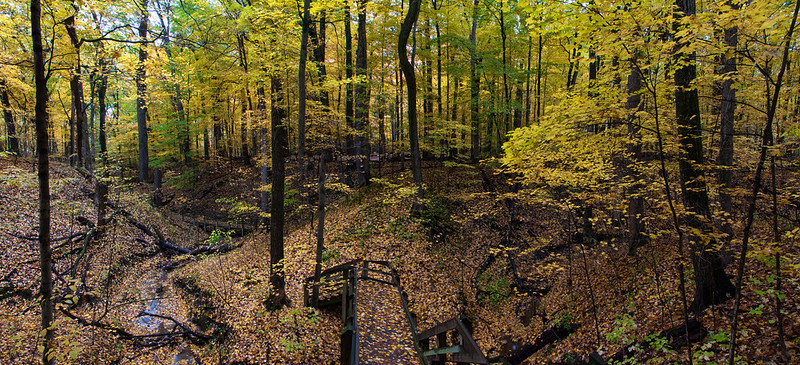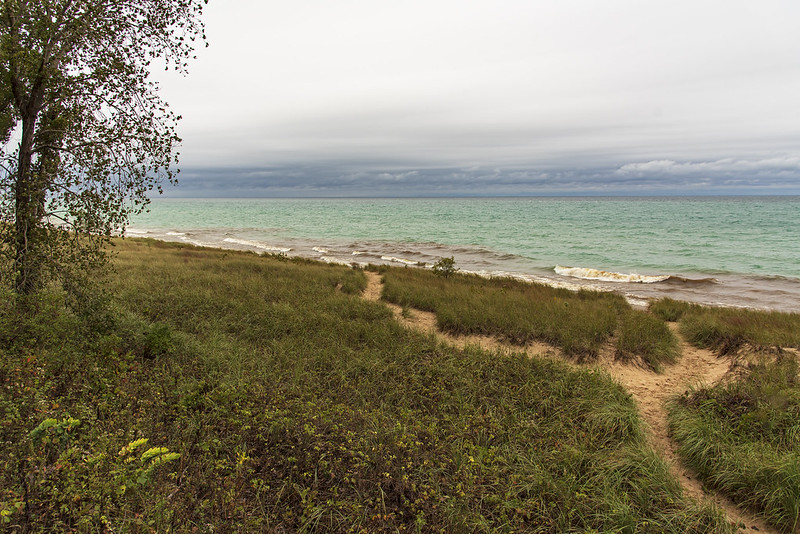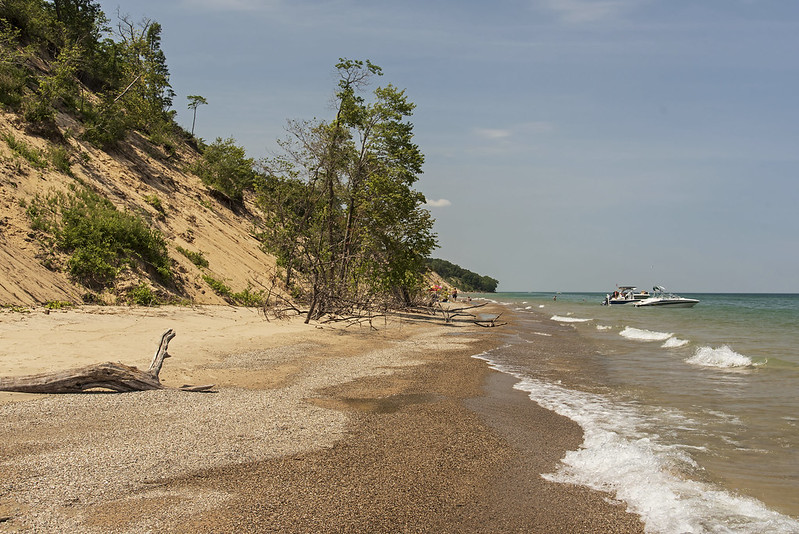
People often talk about "fire and ice" in photography - a warm color in a photo of a very cold, winter subject. While I can't really say I seek out photos like that, they do have a certain appeal. Every once in a while I will encounter a time when the cloudy sky opens up for a while allowing the golden light of the sun to highlight the clouds, and this was one of those days.
The yellow sky was quite a bit in the distance, and seemed it had little chance of heading toward us to illuminate the entire landscape, but there was just enough color at this moment to make the already interesting environment a bit more appealing.
This photo was taken on a hike through Miller Woods, part of the Indiana Dunes National Lakeshore in northwest Indiana. Several trails wind through this hilly oak savanna, making the two mile trek to Lake Michigan many more miles long if you explore them all. The landscape is dotted with dozens of small ponds between the hills of the dunes. It's a surprise this land has lasted this long without being taken over by the industry that surrounds it. Steel mills, railroads, and other heavy industry have taken their toll on the dunes of Indiana, but this was never really touched. The steel industry owned the land and ran several railroad tracks through it, but most of it remained rare oak savanna.
Thanks the the park service, this area was set aside for preservation, and it can be visited today.














































